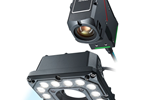Touch Probe Technology Enables Easy Inspection for Moldmakers
IMTS2024: The WM-6000 touch probe ensures easy quality control and metrology applications that prove useful for moldmakers for jobs such as reverse engineering.

Source | Keyence Corp. of America
Keyence Corp. of America is introducing the WM-6000 for quality control and metrology applications to enable fast and easy inspection including probe measurement and scanning. Offering a wide area, portability and handheld CMM, it can help fully inspect parts of all sizes in an 82" area. The touch probe technology is designed for taking dimensions, including 3D and GD&T measurements, while the scanning probe can be utilized for quick shape data and reverse engineering.
The software is intuitive so that it can be used by anyone without any formal training, Keyence notes, and it can also be used anywhere necessary, including outdoors. The software will also print full inspection reports, complete with images, to streamline quality control documentation. Overall, the system reduces downtime, offloads time-consuming measurements from CMMs or help to address skilled-labor challenges.
The WM-6000 is the largest model in Keyence’s CMM line-up, and the only system to include a handheld 3D scanner. For mold builders, this tool is helpful for creating, assembling and inspecting molds. If a mold builder is working to reverse engineer an already existing item, the scanning probe can easily capture dimensions and geometry, enabling the creation of a digital model that can be used to create the mold. For assembly, the touch probe can be utilized for measuring GD&T features like perpendicularity and true position to ensure accurate fit-up and alignment of the mold. For final inspection of the mold, the scanner can gather shape data to make sure the final product will meet exact specifications and tolerances.
Generally, the WM 600 has the capabilities to meet inspection requirements, whether used in quality control lab, on the shop floor or even outside.
Related Content
-
What Is Scientific Maintenance? Part 1
Part one of this three-part series explains how to create a scientific maintenance plan based on a toolroom’s current data collection and usage.
-
Think Safety: Eliminate Hazards Throughout the Shop
The tooling community is taking advantage of new products for safer mold shops and molding facilities.
-
Breaking Down 3D Scanning in Moldmaking
Identifying 3D scanning requirements and implementing the appropriate technology.












